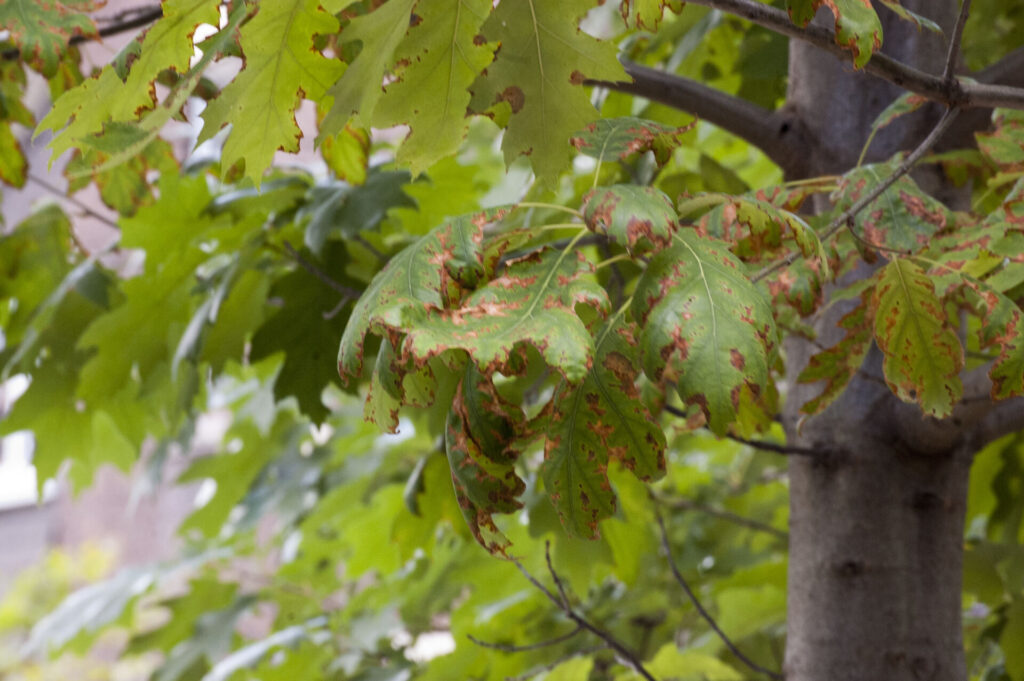
Hello,
We noticed the red oak tree outside our new house is looking sad, and we’re not sure why! It’s not a mature oak, but many of the leaves appear to have brown intrusions around the edges. We’d like to keep it healthy and happy, but we’re not sure how. It’s on the east side of the house, (in the shade of some larger trees bust mostly open) and seems to have a mulched garden of native plants at its base. It’s currently about three storeys tall.
Thank you very much!
Thank you for contacting the Toronto Master Gardeners regarding your red oak.
In general, red oaks preferred habitat is a rich moist but well drained soil. When young, they can tolerate shade but requires full sun (6+hrs) for good growth as it gets older. Most trees, including red oaks, are susceptible to leaf scorch. This occurs when the tree does not receive adequate moisture, as a result they cannot uptake enough water to compensate for what it loses through it’s leaves due to transpiration. This summer has been unusually dry. Have you been supplementing the tree with additional water? If the soil beneath your oak (25- 35cm) down is dry and crumbly, it is time to water your tree. Consider moving a soaker hose under the canopy of the tree and letting the water run at a trickle so that the water can percolate into the ground.
You mention that there is a mulched bed under the tree. Mulching under the tree helps to control moisture by keeping the soil cool, controls erosion, suppresses weed growth and feeds valuable soil microorganisms as it breaks down. But, make sure that the mulch is not against the tree trunk. Mulch should be pulled 15cm away from the trunk of the tree. Mulch that is mounded against the tree trunk can lead to moisture build up which can lead to wood decay and deteriorating bark.
Oaks are also susceptible to a number of leaf diseases; however from your photo I am not seeing any leaf curl, leaf discolouration or significant leaf drop. This website lists the various diseases of red oaks
My suggestion would be to first check the moisture level under your oak tree: if dry, give it a good drink and monitor the tree. If symptoms get worse you can always contact a certified arborist for a diagnosis. To find a certified professional arborist to help you with a tree problem, visit the International Society of Arboriculture’s searchable database here.

